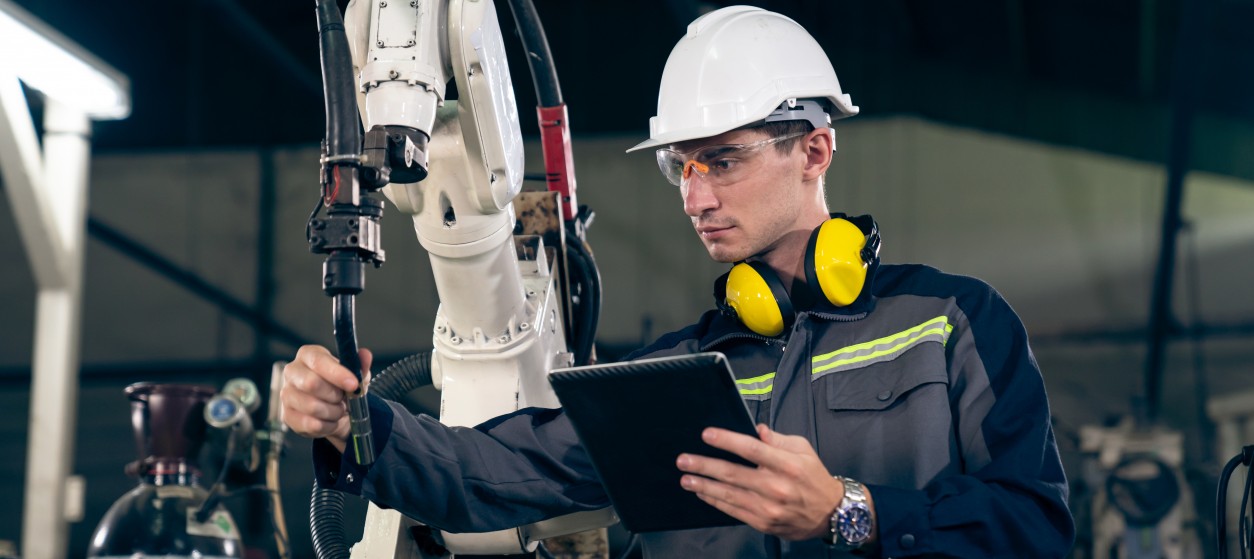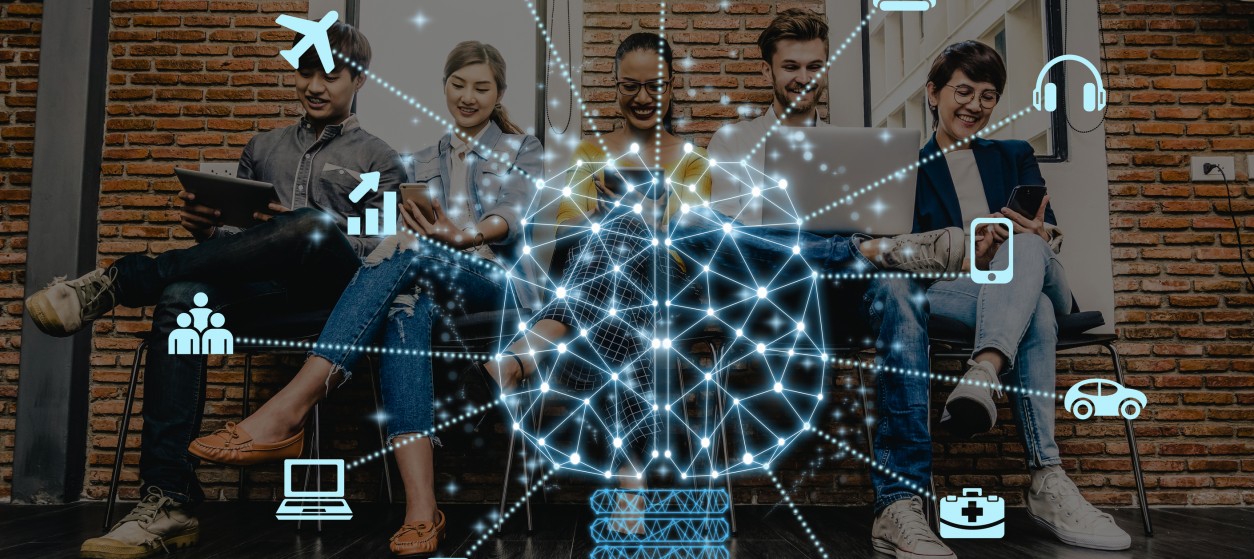Every year, we are faced with technological advancements that are not only mind-blowing and overwhelming, but also difficult to predict. The rate at which technology has been growing is truly astonishing. Nevertheless, we should always be cautious about supporting predictions for exponential growth as advancements in technology are still comparatively lower than human evolution. At the dawn of 2023, all stakeholders of the technology sector are interested in knowing the technology trends that will be popping up. 2023 will be an exciting year for technology with significant advances in areas like Machine Learning and Artificial Intelligence (AI), Quantum computing, Sustainability and Green Projects, as well as emerging technologies like the Metaverse. Here are our top five predictions.
1. Artificial Intelligence will become more Creative
This was a year of significant AI developments. As a prominent example, ChatGPT was introduced as a breakthrough that can interact with humans to help them answer important questions of social and professional nature. These interactions tend to be context-aware and to some extent personalized. For instance, the ChatGPT chatbot can help healthcare professionals to diagnose patients by asking questions about their symptoms, medical history, and lifestyle. It can also provide patients with advice about how to manage their health.
In 2023, we will see an evolution of these interactive chatbots in a more creative direction. Interactive AI chatbots will become more creative and support humans in making decisions by generating new ideas and insights, beyond existing information available on the internet. This will include the development and integration of novel deep learning and natural language processing tools that can understand human emotion and creativity better than today’s chatbots do. In 2023 we will increasingly see bots that will engage in short conversations based on what they learn about the users’ interests and preferences from their previous interactions. Most importantly, 2023 will be probably the year where we will see increased integration of emotional AI in interactive chatbots.
2. Humanoid Robots and Artificial Intelligence
Robotics is one of the most rapidly evolving segments of AI. In 2023 we will see more robots becoming humanoid and human-centric, especially in contexts where robots are used to provide services to humans. Examples of such humanoid systems include robotic receptionists that greet customers at retail stores or even self-driving vehicles that deliver groceries or packages on demand. Moreover, drones will become more common place as they are used to deliver items directly to people’s homes or offices. Specifically, the drone delivery market will continue to grow and companies such as large players like Amazon are already testing how they could use them for package delivery. This evolution of humanoid robots will be boosted by advances in computer vision, deep learning and industrial robotics. In the future, humanoid robots will be more socially accepted, and people may form relationships with them as they would with other humans. 2023 could be a milestone year towards this longer-term goal.
3. Quantum Computing Maturity
In the coming years, Quantum computing will be on the rise and will compensate for the end of the Moore’s law. Recall that the Moore’s law describes the exponential growth in processing power that has been observed in recent decades. It was coined by Intel co-founder Gordon Moore in 1965, who noticed that each new silicon chip was capable of doing more work than its predecessor i.e., computers got significantly faster over time. Nevertheless, this trend has come to an end because we are now running out of ways to make silicon chips smaller and more efficient. Quantum computing is starting to fill this gap by providing an alternative way of making computing calculations based on quantum mechanics instead of classical physics. Quantum computers perform tasks much faster than their classical counterparts because they use subatomic particles instead of bits to store information. During the last couple of years giant IT companies like Google and Microsoft made big investments into quantum computing research and expect this new computing paradigm to pay off.
Though full commercial scale quantum computing is likely to become available later in the decade, 2023 will see the increased use of quantum computers for problems like cryptography, drug design, weather forecasting and financial modelling. In these fields, quantum computers will exhibit exceptional performance that is beyond our imagination. Moreover, many vendors will invest in improving the performance of their quantum computers (e.g., 1000-qubit quantum computers are likely to be released).
4. Metaverse Advances towards a more Immersive Internet
Even though Meta presented its Metaverse vision during the last quarter of 2021, the underlying technologies of the metaverse (e.g., Virtual Reality (VR) and Augmented Reality (AR)) have been around for over two decades. However, it’s only now that we’re starting to see some parts of the Metaverse vision materialize. This is due to several reasons, such as the higher affordability of VR/AR headsets, the improvement of their functionalities and their broader adoption in home and enterprise settings. For instance, VR simulations are gradually becoming more realistic through the use of haptic feedback. Haptic feedback provides users with sensations such as feeling hot or cold or being touched by another person. This makes VR feel more real than ever before, making it easier for people to lose themselves in their virtual worlds. As another example, AR devices are becoming more common so that wearers can interact with digital objects by simply looking at them while walking down a street or sitting at home watching television.
In 2023 we will see these applications becoming more immersive through the implementation of Mixed Reality (MR). The latter will enable novel applications in virtual environments, where users will be interacting with humans and virtual assistants during activities like shopping, gaming, and visiting of monuments. The vision of Metaverse may still appear as overhyped in 2023, but the shift towards a more immersive internet will certainly continue to materialize.
5. Renewable Energy and Smart Devices
During 2022 the world faced an energy crisis:The prices of conventional forms of energy skyrocketed and many countries developed new energy independence plans. In 2023, technology will boost the realization of these plans through supporting the global movement toward renewables. For instance, battery storage solutions are already seen as very important towards exploiting renewable energy. In 2023 and beyond, both short- and long-duration battery storage technology will improve. Moreover, global solar capacity will continue to grow. It is highly likely the terawatt power generation milestone will be achieved in 2023. More powerful and adaptable photovoltaic panels will be developed, which will boost further the decline in the cost of solar energy.
IoT technology will also evolve to support energy efficiency based on more power efficient devices. In this direction, IoT device vendors will increasingly focus on devices that are able to harvest energy from the environment and use this energy to function.
It’s always hard to provide credible prediction about technology evolution within the timeframe of a given year. Our predictions built on what happened and attracted attention in 2022. In one year, we will know which of these predictions materialized. Happy 2023 and stay tuned!











I was just seeking this info for some time. After 6 hours of continuous Googleing, at last I got it in your website. I wonder what’s the lack of Google strategy that do not rank this type of informative websites in top of the list. Usually the top websites are full of garbage.
https://www.smortergiremal.com/
you’re really a good webmaster. The website loading speed is amazing. It seems that you are doing any unique trick. Moreover, The contents are masterpiece. you have done a magnificent job on this topic!
https://americasrestorationservices.com/water-damage-mitigation-atlanta-flood-damage-cleanup-atlanta/